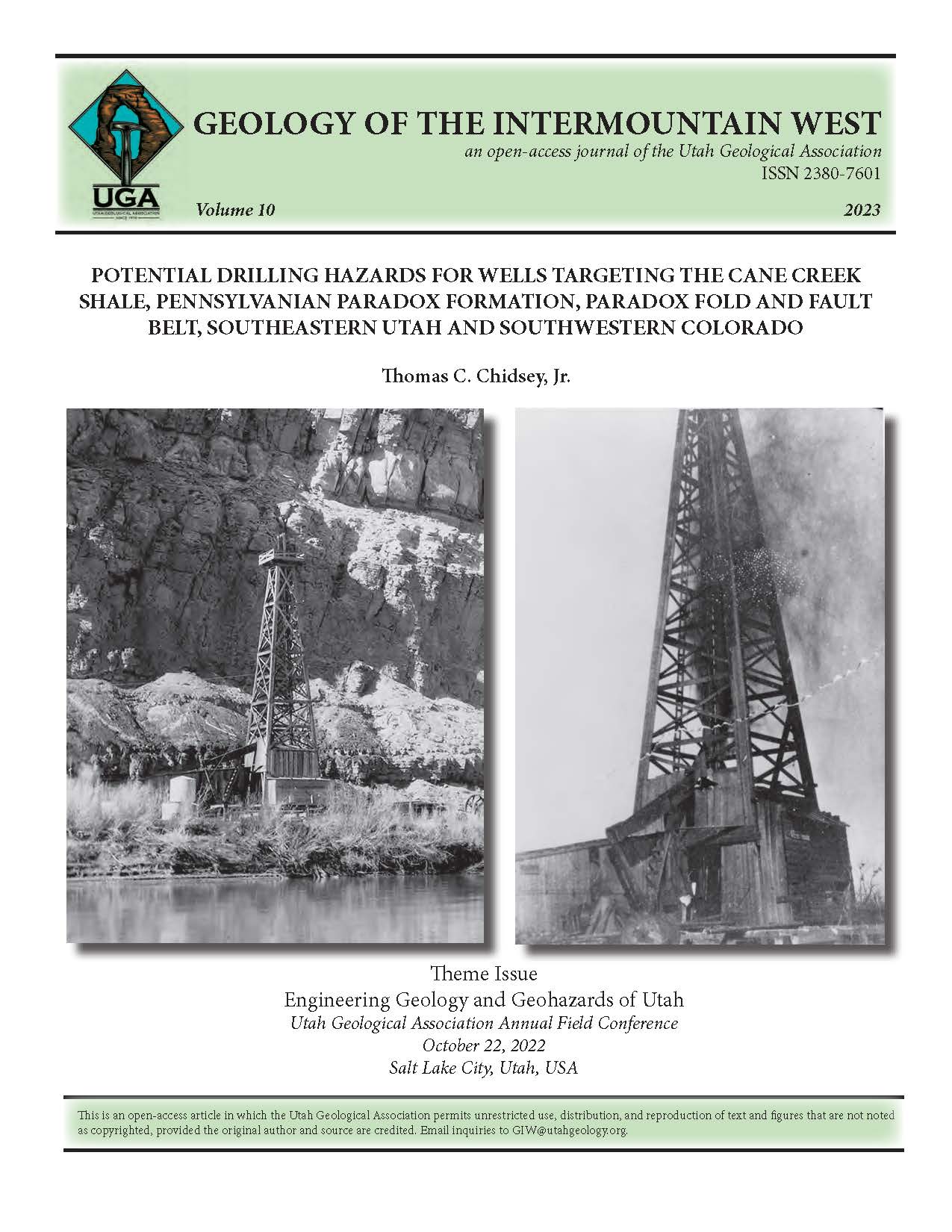Potential drilling hazards for wells targeting the Cane Creek shale, Pennsylvanian Paradox Formation, Paradox fold and fault belt, southeastern Utah and southwestern Colorado
Abstract
The Cane Creek shale of the Pennsylvanian Paradox Formation represents a major target for oil and gas in the Paradox fold and fault belt of the northern Paradox Basin of southeastern Utah and southwestern Colorado. Early exploration and development attempts resulted in blowouts due to unexpected gas-bearing intervals and casing collapses caused by salt flowage in the Paradox Formation. These problems represent some of the types of drilling hazards that could be expected when planning Cane Creek wells. Horizontal drilling first used in the early 1990s changed the Cane Creek shale play from one of mostly drilling failures to a more successful commercial play. Depending on the location, exploratory Cane Creek wells may penetrate a section that ranges in age from Cretaceous through Pennsylvanian. Drilling in the region often encounters a wide variety of lithologies (carbonates, shale, mudstone, sandstone, and evaporites) and associated potential hazards that may include: (1) swelling clays, (2) high porosity-permeability or fractured zones resulting in lost circulation or excessive mudcake buildup, (3) “kicks” due to the influx of reservoir fluid (oil, water, or gas) into the wellbore, (4) uranium-rich zones, (5) washouts, (6) hole deviation, sticking, and other well-integrity problems, (7) chert, and (8) overpressured intervals. In addition, natural carbon dioxide, which flows from the partially human-made Crystal Geyser near some Cane Creek wellsites, represents an unusual drilling hazard if encountered in the northernmost part of the fold and fault belt. Using the lessons learned from the recently completed research well, State 16-2 (renamed the State 16-2LN-CC, API No. 43-019-50089, after the horizontal leg was drilled), and other wells in the region, drilling engineers and operators can better plan for potential hazards when exploring for hydrocarbons in the Cane Creek shale or deeper targets (Mississippian Leadville Limestone and Devonian Elbert Formation) in the fairly remote, relatively sparsely explored Paradox fold and fault belt. The goal is to de-risk wells, lower expenses, and mitigate problems before they occur. The expected results are safer and more successful drilling of wells to the Cane Creek shale and deeper reservoirs ultimately leading to additional commercial hydrocarbon discoveries in the region.





